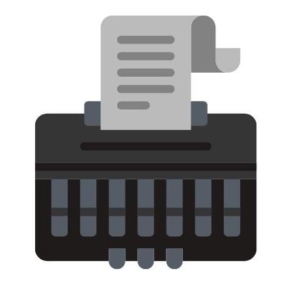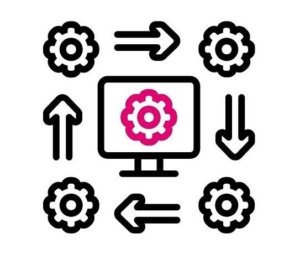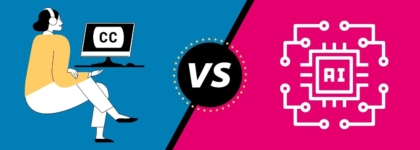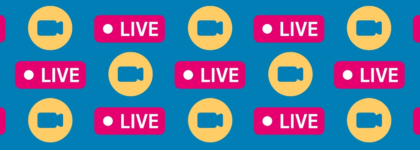Why You Need Live (Human) Captions to Stream Events
Updated: December 9, 2021
We believe in using closed captions to create accessible content for all – and live events are no exception! Born out of necessity during the pandemic, streaming events quickly became the new normal due to the convenience and flexibility offered by virtual alternatives.
However, many organizations are still struggling to include live captions and host events that are completely accessible to all audiences. While some organizations opt for the automatically generated captions that are built into popular meeting platforms, their notorious inaccuracy often complicates the viewing experience for closed caption users.
As a result, the human touch is crucial in producing accurate, high-quality closed captions. Keep reading to learn why you should incorporate human-generated captions at your next live virtual event.
Fostering digital accessibility
First and foremost, one of the most important reasons to incorporate captions is to ensure that your event is accessible to all audiences. In any case, organizations should strive to provide an accessible, equitable, and enjoyable experience for all users. However, depending on industry, your content may be subject to federal regulations that require accessible accommodations for d/Deaf and hard of hearing viewers.
While these requirements most often refer to the provision of closed captions, incorporating accessibility could offer the dual benefit of improving your organization’s visibility online (for example, if you record live video content to repost on other social channels later). Associating a text file with your video content can enhance search engine optimization (SEO), which in turn improves your video’s search rank and increases exposure. Additionally, a study from the Journal of the Academy of Marketing Science found that captions have the ability to improve brand recall and behavioral intent.
Learn more about federal accessibility laws 📑
Accessibility benefits everyone
It’s been proven that accessibility has the power to mutually benefit everyone. Colloquially referred to as the “Curb-Cut Effect,” the idea is that certain features created for the disability community wind up being used and appreciated by a wider community than originally intended – for example, wheelchair-accessible curb cuts also proved useful to cyclists, parents with strollers, people traveling with luggage, and so on.
This same concept applies to closed captioning, which has shown to improve reading (and overall) comprehension skills for non-native English speakers, viewers with learning disabilities, or college students – who can use downloadable transcripts as study materials. This means that while captions are an important feature for d/Deaf and hard of hearing viewers to follow along with a live event, they also offer the dual benefit of keeping every member of your audience engaged throughout the event.
From a marketing perspective, transcripts generated from live event captioning present the perfect opportunity to create derivative content later on. For example, excerpts from the transcript can be used as the foundation for writing blog posts, creating social copy, publishing quotes, and more!
Auto captions aren’t reliably accurate
When faced with the question of live captioning, many organizations wonder why they can’t just rely on the built-in, automatic captions generated by their preferred platform like Zoom, Microsoft Teams, or Google Meet. Often, these automatic captions are based on automatic speech recognition (ASR), which can be a helpful tool in the caption generation process.
However, the accuracy rates of ASR alone are not sufficient to provide captions that meet the industry standard. Because neither technology nor humans can provide a 100% accurate caption file, the industry standard is 99% accuracy – which 3Play guarantees to meet (if not exceed). If you choose to work with a captioning vendor for your live event, the chances are that your accuracy rates will significantly improve, as compared to relying solely on ASR.
What is 99% accuracy, really? 📊
What to consider in a vendor
When looking for a live captioning vendor, there are a few points you should consider to ensure you have a seamless experience:
Streamlined scheduling
In the live captioning industry today, much of the communication between event organizers and human captioners takes place via email. This can lead to a very lengthy scheduling process before your event, and can be ultimately ineffective in the instance that the captioner disconnects from your live event & communication is urgent.
To remedy this, try looking for a live captioning vendor that offers streamlined scheduling – a schedule you can access at any time, and provides an instantaneous connection with the captioner working on your event.
 Always have a backup plan
Always have a backup plan
In the age of virtual meetings, we’ve all become familiar with the possibility of an unreliable Wifi network. Most of the time, a simple “turn it off and turn it back on” will do the trick, but a spotty connection between a professional captioner and your event stream can throw a wrench in the flow of your event. In the worst case scenario, the captioner may not be able to rejoin the stream at all, and your event will be left without captions entirely.
To prepare for the worst case scenario, you should look for a vendor with a solid backup plan already in place. This way, if your stream is interrupted or your captioner drops off the call, there is a reliable failover workflow in place and closed captions will continue unaffected.
Post-event publishing (for free)
As we mentioned earlier, transcripts generated from live captioning can be useful in creating derivative content after your event. However, some vendors charge additional for access to transcripts and captions after your event…
This should be included in the rate you pay for live captioning! To avoid incurring unnecessary expenses, search for a captioning vendor that offers free access & transcript upgrades after your event – at no extra cost.




 Always have a backup plan
Always have a backup plan


